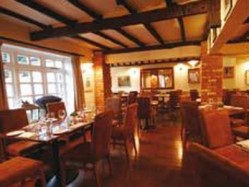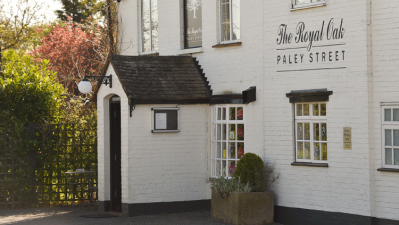Redefining the gastropub: Definition 2 - the bona-fide gastropub

It’s rare to find an independent, owner-operated food pub that will use the term gastropub these days. Jesse Dunford Wood, chef and co-owner at The Mall Tavern in Notting Hill, west London, doesn’t like it, even though his pub embodies exactly what a good gastropub should be. “It’s a very abused term. We need a new description of pubs that cook real food for real people.” There are a few alternatives knocking around.
The phrase ‘bar and kitchen’ works for new-build venues, if not traditional pubs. ‘Pub and kitchen’ is similarly honest and simple, and suits urban pubs particularly, while ‘pub and dining rooms’ carries a hint of upmarket chic. The Copper Horse, near Scarborough, in North Yorkshire, calls itself a ‘bistropub’.
“It is important for our clients to differentiate themselves in a crowded market,” says Annie Stirk, of Absolutely Food PR & Marketing. “The Copper
Horse feels the term gastropub is tired, as is ‘dining pub’. The term bistro communicates a friendly neighbourhood feel.”
However, having gone through its first fashion cycle, the word gastropub may be ready for revival, at least by pubs that can demonstrate their credentials. What, then, constitutes a ‘real’ gastropub? Well, it should serve good beer, and set aside space for people who just want to drink. There should be affordable bar snacks and main dishes in a £9-£14 bracket. Food should be local, seasonal, cooked on-site and menus should change weekly or daily. It should be independent, owner-operated and avoid costly extras.
At The Mall Tavern, bar snacks cleverly double up as starters and the food is a refined take on pub classics (chicken Kiev, cow pie). “It’s important the food is in keeping with the pub atmosphere,” says Dunford Wood. “You don’t want to freak people out, which some chefs get wrong. They want to flex their culinary muscles in the wrong setting.”
The Mall offers what a great gastropub should: good value, good food, good fun. But within that framework it also offers afternoon teas, private dining and a chef’s table. Similarly, The Star Inn at Harome, in North Yorkshire, has found it entirely feasible to operate on several different levels. It is a community pub (quiz nights, an ad-hoc clubhouse for the village cricket team) and a high-end restaurant delivering up to 1,500 covers a week.
“People come for the warmth of an old English pub and without the locals you wouldn’t get that atmosphere,” says chef-owner Andrew Pern. And if people call it a gastropub? “It doesn’t bother me.”
How to spot one
Often referred to as both a pub and a restaurant, a true gastropub treads the line between both. There’s often no sommelier, but the staff will have an above-average knowledge of a decent wine list and the food is often top-end restaurant quality, using seasonal and unusual ingredients. Michelin stars can feature, as can home-made bar snacks.
Examples
- The Jack in The Green (Exeter, Devon)
- The Harwood Arms (Fulham, west London)
- The Star Inn at Harome (Harome, N Yorks)
- The Royal Oak (Paley Street, Berks)
- The Mall Tavern (Notting Hill, west London)
- The Hinds Head (Bray, Berks)
For all the articles in our Redefining the gastropub feature click here















